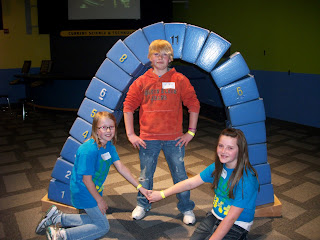




The 5th graders were able to do hands on activites to learn. They built a pyramid, put the shrads back together to make a pot, identified kinds of bones in an archaeologist dig, stood on a humungous map of Egypt, and did many interatctive screens. Then they read about and saw artifacts from Egypt. They were able to see Annie, named for an anonymous mummy and her coffin. She was found floating in the Nile River and mummified. They were able to read about he steps to creating a mummy.





















